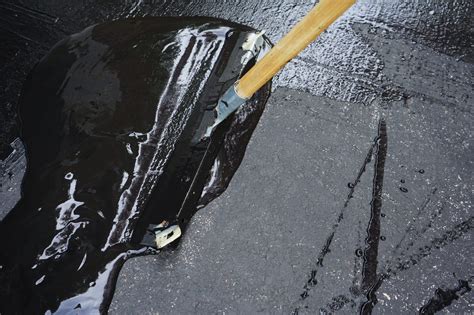Sealcoat Drying Time: Make It Rainproof Quickly
Asphalt sealcoating protects your pavement from the elements, extending its lifespan and enhancing its appearance. But the effectiveness of this protective layer hinges on proper drying time. Rushing the process can lead to cracking, peeling, and a compromised seal, negating the benefits of the application. This comprehensive guide explores the factors influencing sealcoat drying time and offers practical tips to ensure your pavement is rainproof quickly and effectively.
What is Sealcoat Drying Time?
Sealcoat drying time isn't a simple number; it's a process. It's the period required for the applied sealcoat to cure completely, transitioning from a wet, sticky state to a hard, durable, water-resistant finish. This process involves the evaporation of solvents and the polymerization (chemical hardening) of the binder. The entire process, from initial application to full cure, can take several days, even a week depending on several factors.
Factors Affecting Sealcoat Drying Time
Several factors influence how long your sealcoat needs to dry before it's truly rainproof:
Temperature:
Higher temperatures accelerate drying. Warm, sunny days promote faster evaporation of solvents, reducing the overall drying time. Conversely, cold, damp weather significantly slows the process.
Humidity:
High humidity hinders drying. The presence of moisture in the air competes with the evaporation of solvents from the sealcoat, extending the drying time considerably.
Type of Sealcoat:
Different sealcoat formulations have varying drying times. Coal tar sealcoats generally dry slower than asphalt emulsion sealcoats due to their thicker consistency and slower curing process. Check the manufacturer's instructions for specific drying time recommendations.
Thickness of Application:
Thicker applications take longer to dry. While a thicker coat offers superior protection, it also increases the drying time proportionately. Applying multiple thin coats is often more effective and efficient than one thick coat.
Wind:
Wind speeds up the drying process. A gentle breeze helps accelerate solvent evaporation, reducing the drying time. Strong winds, however, can potentially blow dust and debris onto the wet sealcoat, compromising the final finish.
Porosity of the Surface:
The absorbency of the asphalt surface affects drying time. A highly porous surface will absorb some of the sealcoat, potentially leaving it thinner and drying faster, but might also reduce the overall effectiveness of the sealant.
How Long Does Sealcoat Take to Dry?
While a definitive answer is elusive due to the factors above, here's a general guideline:
- Initial Tack-Free Time: Expect the sealcoat to become tack-free (no longer sticky) within a few hours in ideal conditions (warm, dry, sunny, and low humidity).
- Light Foot Traffic: Light foot traffic might be possible after 24 hours, depending on the conditions.
- Vehicle Traffic: Typically, you should wait at least 24-72 hours before allowing vehicle traffic on the newly sealed surface. Some manufacturers recommend up to 7 days for heavy vehicle traffic.
- Full Cure: Full cure, ensuring complete water resistance and maximum durability, can take several days, even a week, especially in less-than-ideal conditions.
How to Speed Up Sealcoat Drying Time (Safely)
While you can't completely control the weather, you can optimize conditions to speed up drying:
- Apply in ideal weather: Schedule the application for a warm, dry, sunny day with low humidity and minimal wind.
- Use a thin application: Multiple thin coats are preferable to one thick coat for faster drying.
- Ensure proper surface preparation: A clean, dry surface will enhance drying time.
- Avoid over-application: Too much sealcoat will not only slow down drying but also potentially lead to problems. Follow manufacturer's instructions.
What Happens If it Rains Before Sealcoat is Dry?
Rain before the sealcoat is fully dry can be disastrous. The water can wash away the sealcoat, causing uneven application, reducing its effectiveness, and potentially necessitating re-application.
What if my sealcoat is taking too long to dry?
If your sealcoat is drying significantly slower than expected, it could be due to unusually high humidity or low temperatures. Consider delaying the application until weather conditions improve.
How can I tell if my sealcoat is dry enough for traffic?
Before allowing traffic, gently press your finger onto the surface. If there's no stickiness or impression left, the sealcoat might be sufficiently dry for light traffic. However, it’s always best to err on the side of caution and wait the recommended time specified by the manufacturer.
By understanding the factors affecting sealcoat drying time and following these tips, you can ensure your pavement is protected and rainproof quickly and efficiently, maximizing the lifespan of your asphalt surfaces. Remember to always consult the manufacturer's instructions for your specific product for the most accurate drying time estimations.

